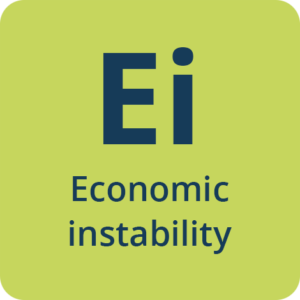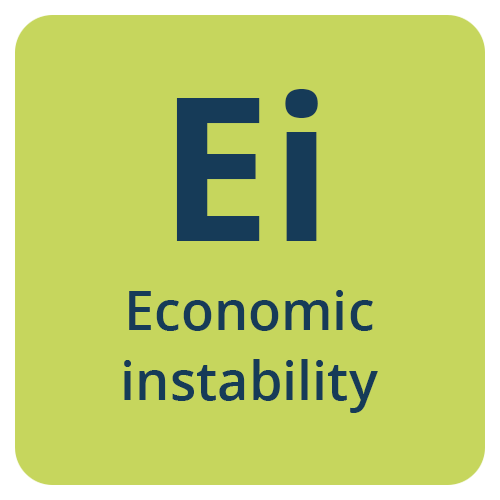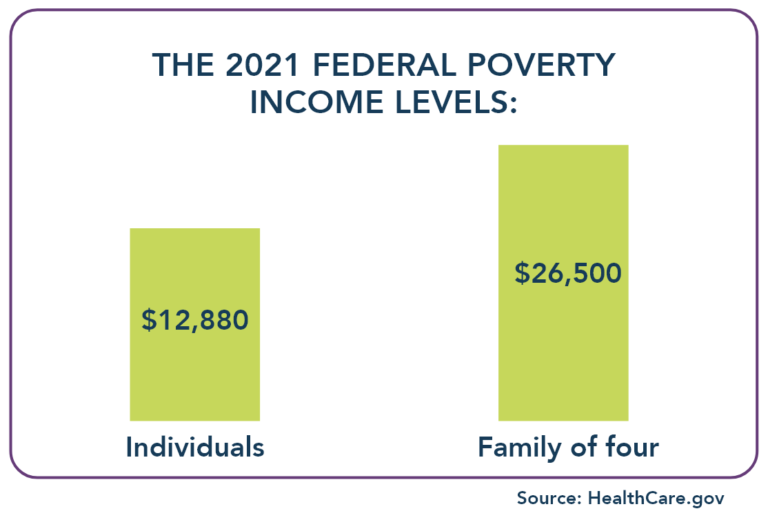 2020 was a difficult year. The pandemic had devastating impacts not just on health and life expectancy, but on the economy and the personal finances of families and individuals across the country. Like COVID-19, the resulting economic impacts were not equally felt by all, with many individuals experiencing new levels of financial hardship.
2020 was a difficult year. The pandemic had devastating impacts not just on health and life expectancy, but on the economy and the personal finances of families and individuals across the country. Like COVID-19, the resulting economic impacts were not equally felt by all, with many individuals experiencing new levels of financial hardship.
According to the U.S. Census Bureau, in 2020 median household income dropped significantly for the first time since 2011. Similarly, the official U.S. poverty rate increased in 2020 after five consecutive years of declines. Further, there are large differences by race and ethnicity. Non-Hispanic white individuals had a poverty rate of 8.2% in 2020. But the poverty rate was 19.5% for Black individuals and 17.0% for Hispanic individuals.

2020 was a difficult year. The pandemic had devastating impacts not just on health and life expectancy, but on the economy and the personal finances of families and individuals across the country. Like COVID-19, the resulting economic impacts were not equally felt by all, with many individuals experiencing new levels of financial hardship.
According to the U.S. Census Bureau, in 2020 median household income dropped significantly for the first time since 2011. Similarly, the official U.S. poverty rate increased in 2020 after five consecutive years of declines. Further, there are large differences by race and ethnicity. Non-Hispanic white individuals had a poverty rate of 8.2% in 2020. But the poverty rate was 19.5% for Black individuals and 17.0% for Hispanic individuals.
This racial and ethnic disparity in wealth is not new. According to research from the Brookings Institution, in 2016, the net worth of a typical white family is approximately 10 times greater than that of a Black family ($171,000 versus $17,150). This gap has not only persisted, but expanded since 1989 and is attributed to lingering and accumulating effects of inequality and discrimination.
There is strong evidence showing a relationship between income, socioeconomic status, and health outcomes, including increased risk for chronic disease, adverse behavioral effects, and shorter life expectancy. Given this direct link between income and health, policies and programs addressing financial instability in the short-term and the root causes of poverty over the long-term will yield individual and population-level improvements in health and well-being.
Maximizing Federal COVID-19 Recovery Investments for Resilience and Equity: Examples from Across the Nation
Case Example: How the Process to Decide on Uses Can Strengthen a Collaborative
Well-Being In the Nation Network Measures
This measurement framework created by the Well-Being in the Nation Network (WIN) offers a set of common measures to assess and improve population and community health and well-being across sectors. The framework is divided into three elements: core measures, leading indicators, and a full flexible set of measures. Specifically, WIN includes community vitality and economy. WIN measures can be used by local wellness funds to show connections between social conditions, health, community, and well-being. The core measures of WIN are well-being of people, well-being of places, and equity.
Accelerating Equity and Justice: Basic Income and Generational Wealth
This brief by researchers at Brandeis University and the Universal Income Project show how basic income projects and Kids’ Futures accounts help to meet individuals’ basic needs, reduce poverty, improve other metrics of well-being, build wealth, and ultimately, boost economic mobility and equity. These findings may be of interest to local wellness funds exploring economic stability or poverty as potential uses. Further, the report provides multiple examples and with outcomes from trials occurring around the country.





